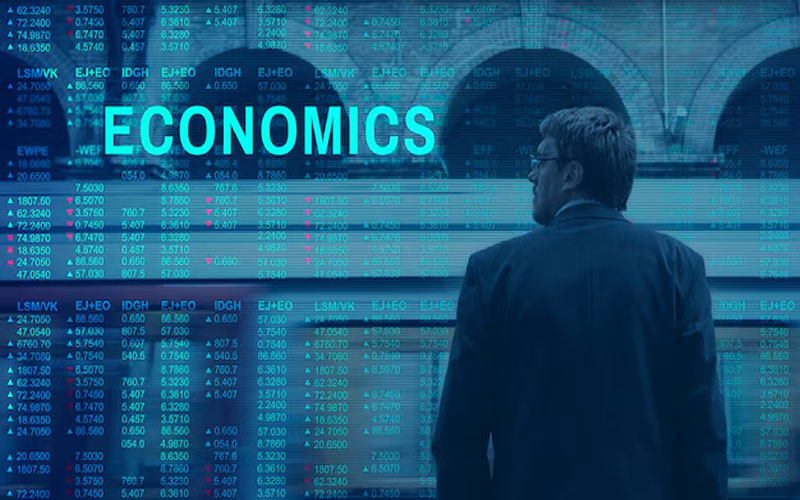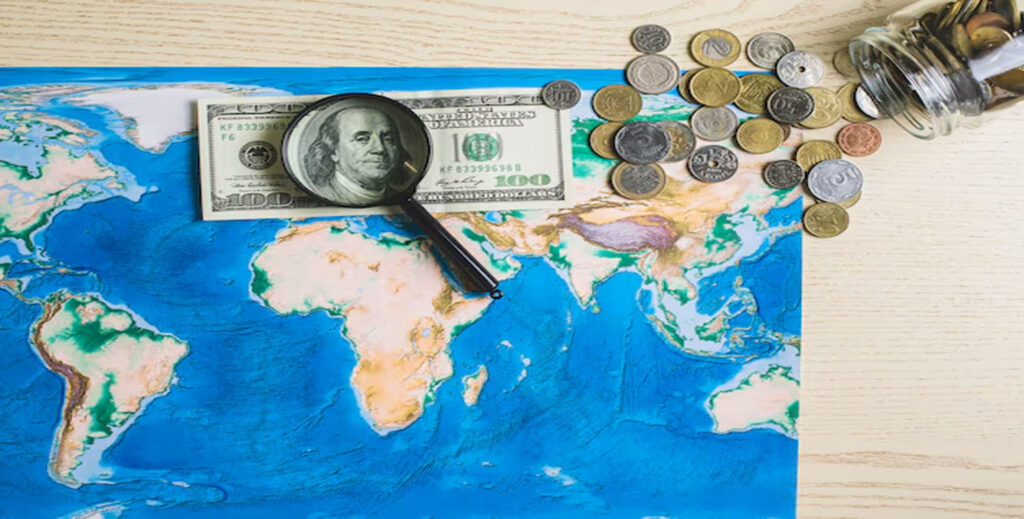The dollar-euro exchange rate, commonly referred to as “taux dollar euro” in French, plays a pivotal role in the global economy. The exchange rate between the U.S. dollar (USD) and the euro (EUR) is one of the most closely watched financial indicators, affecting everything from international trade to investments, tourism, and even the economic policies of various countries. This article delves into the factors that influence the taux dollar euro, its historical significance, and its current trends, providing a comprehensive understanding of how this exchange rate impacts global markets.
1. Understanding the Dollar-Euro Exchange Rate

The “taux dollar euro” refers to the exchange rate at which the U.S. dollar is traded for the euro. This exchange rate is vital because both the dollar and the euro are considered major reserve currencies. The U.S. dollar is the primary global reserve currency, widely used in international trade and finance. The euro, on the other hand, is the official currency of the European Union and is the second most traded currency in the world.
The exchange rate between these two currencies fluctuates constantly due to a range of factors, including monetary policies, inflation rates, political events, and economic indicators such as GDP growth, unemployment rates, and consumer confidence. Investors and traders closely monitor the taux dollar euro to make informed decisions on foreign exchange (Forex) trading, investments, and hedging strategies.
2. Historical Context of the Dollar-Euro Exchange Rate
The euro was introduced in 1999 as an electronic currency, and physical euro banknotes and coins were launched in 2002. Prior to the euro’s introduction, many European countries had their own currencies, such as the German mark, the French franc, and the Italian lira. The creation of the euro unified these currencies and provided a common economic framework for the European Union.
Before the euro’s introduction, the U.S. dollar dominated international trade, but the euro was quickly adopted by many investors and institutions as an alternative to the dollar. The taux dollar euro, in the years following the euro’s creation, fluctuated significantly as the market adjusted to this new global currency.
In the early years, the euro was weaker than the U.S. dollar. For example, in 2002, the exchange rate was around 1.05 USD to 1 EUR. However, the euro strengthened over time due to various factors, including the European Central Bank’s (ECB) policies, the economic growth of the European Union, and the relative decline of the U.S. economy following the 2008 global financial crisis. In 2008, the euro surpassed the dollar, reaching parity for the first time in over five years. This event marked a significant turning point in the dynamics of global currency markets.
3. Key Factors Influencing the Taux Dollar Euro

Several economic, political, and market-related factors contribute to the fluctuations in the taux dollar euro. Here are some of the most significant drivers:
a. Interest Rates and Monetary Policy
One of the most important factors affecting the dollar-euro exchange rate is the difference in interest rates set by the central banks of the U.S. and the Eurozone. The Federal Reserve (Fed) in the U.S. and the European Central Bank (ECB) in the Eurozone make key decisions regarding interest rates that impact the value of both currencies. When the Fed raises interest rates, the value of the dollar tends to increase because higher rates attract investment from foreign capital. Conversely, when the ECB raises interest rates, the euro strengthens for similar reasons.
For example, during periods of low interest rates in the Eurozone, the value of the euro may weaken relative to the dollar as investors seek higher returns in the U.S. markets. On the other hand, if the Fed cuts interest rates while the ECB maintains its rates, the euro may appreciate against the dollar.
b. Inflation and Economic Growth
Inflation plays a crucial role in the valuation of currencies. A country with a higher inflation rate than its trading partners will typically see its currency depreciate. For instance, if inflation in the U.S. rises faster than in the Eurozone, the value of the dollar may fall against the euro as investors shift their capital to the European markets. Conversely, if inflation in the Eurozone is higher, the euro will weaken relative to the dollar.
Similarly, economic growth rates have a direct impact on currency exchange rates. If the U.S. economy is growing faster than the Eurozone economy, the demand for the dollar may increase, leading to a stronger dollar relative to the euro. On the other hand, stronger economic growth in the Eurozone could lead to a stronger euro.
c. Political Events and Market Sentiment
Political events, such as elections, changes in government policies, or geopolitical instability, can have a profound effect on the dollar-euro exchange rate. For instance, uncertainty surrounding Brexit (the United Kingdom’s decision to leave the European Union) created volatility in the euro as investors feared the potential economic repercussions for the Eurozone.
Similarly, trade wars, such as the U.S.-China trade dispute, can influence the dollar-euro exchange rate. A trade war between the U.S. and another major economy can lead to a weaker dollar if investors become concerned about the potential economic impact of the dispute.
Moreover, market sentiment and risk appetite play a role in currency fluctuations. During periods of global economic uncertainty, investors may flock to the safety of the U.S. dollar, which is viewed as a “safe-haven” currency. This can lead to a stronger dollar, while the euro may weaken due to reduced demand.
d. Trade Balances
The trade balance of a country is another key factor in determining currency values. If a country has a large trade surplus (exports exceed imports), its currency tends to appreciate because foreign buyers need to purchase the country’s currency to pay for goods and services. On the other hand, a trade deficit can weaken a currency as the country imports more than it exports.
For instance, if the Eurozone has a trade surplus with the U.S., the euro may strengthen relative to the dollar. Conversely, if the U.S. runs a trade deficit with the Eurozone, the dollar could weaken against the euro.
4. Current Trends in the Dollar-Euro Exchange Rate
In recent years, the taux dollar euro has been influenced by several key events. For instance, after the COVID-19 pandemic, the U.S. government implemented substantial fiscal stimulus measures, which put downward pressure on the dollar. Meanwhile, the European Central Bank responded with its own monetary stimulus policies, including low interest rates and large-scale asset purchases.
As of 2024, the dollar-euro exchange rate is hovering around 1.05 USD to 1 EUR, having fluctuated significantly in recent months. The Federal Reserve’s actions, including interest rate hikes to combat inflation, have supported the value of the U.S. dollar, while the ECB’s relatively more cautious approach has caused the euro to lag behind.
Moreover, geopolitical factors, such as the ongoing war in Ukraine and tensions in the global supply chain, continue to influence the dollar-euro exchange rate. Investors are closely monitoring these events to assess their potential impact on both the U.S. and Eurozone economies.
5. Implications of Dollar-Euro Movements for Global Markets

The fluctuations in the taux dollar euro have far-reaching consequences across the global economy. Some of the key implications include:
a. Trade and Exports
The strength of the U.S. dollar can have a significant impact on U.S. exports. When the dollar appreciates, U.S. goods and services become more expensive for foreign buyers, which can lead to a decline in exports. Conversely, a weaker dollar makes U.S. products more affordable in international markets, potentially boosting export activity.
For the Eurozone, the opposite is true. A stronger euro can make European goods more expensive for foreign buyers, potentially reducing exports. A weaker euro can enhance the competitiveness of European products in the global market.
b. Investment Flows
The taux dollar euro also affects global investment flows. A stronger dollar can attract more foreign investment into U.S. assets, such as stocks, bonds, and real estate, as investors seek higher returns. However, a weaker dollar may push investors to look for opportunities in other markets, including the Eurozone.
On the other hand, a strong euro can encourage investment in the European markets, while a weaker euro may drive investors away from Eurozone assets due to the potential for lower returns.
c. Tourism and Travel Costs
Currency fluctuations directly impact tourism. A stronger dollar means that U.S. tourists will have greater purchasing power when traveling abroad, including in the Eurozone. Conversely, a stronger euro means European tourists can enjoy better exchange rates when visiting the U.S.
6. Conclusion
The taux dollar euro is a key indicator that reflects the health of the global economy and affects millions of people worldwide. From international trade to investment decisions, understanding the factors that influence this exchange rate is essential for businesses, investors, and policymakers. As the world continues to recover from the impacts of the COVID-19 pandemic and faces new geopolitical challenges, the dynamics of the dollar-euro exchange rate will continue to evolve, shaping global economic trends and opportunities.
By staying informed about the various factors that influence the dollar-euro exchange rate, individuals and businesses can better navigate the complexities of international markets and make more strategic financial decisions.
Also Visit: Logiciel Billetterie: Revolutionizing Ticket Sales in the Digital Age
Remise en Question: The Importance of Self-Reflection
Dated at This Day of: A Reflection on Time, History, and Milestones
Cuánto es 350 Libras en Kilos: Understanding the Conversion and its Practical Uses



